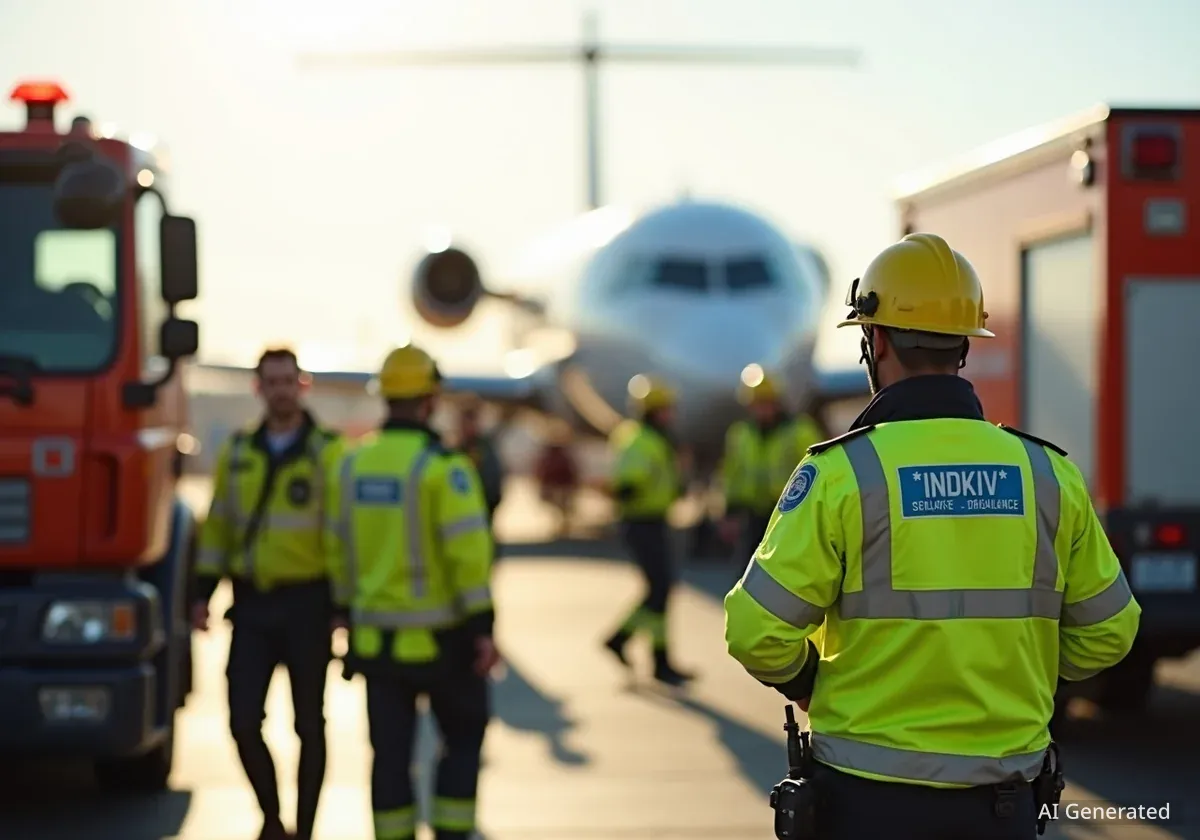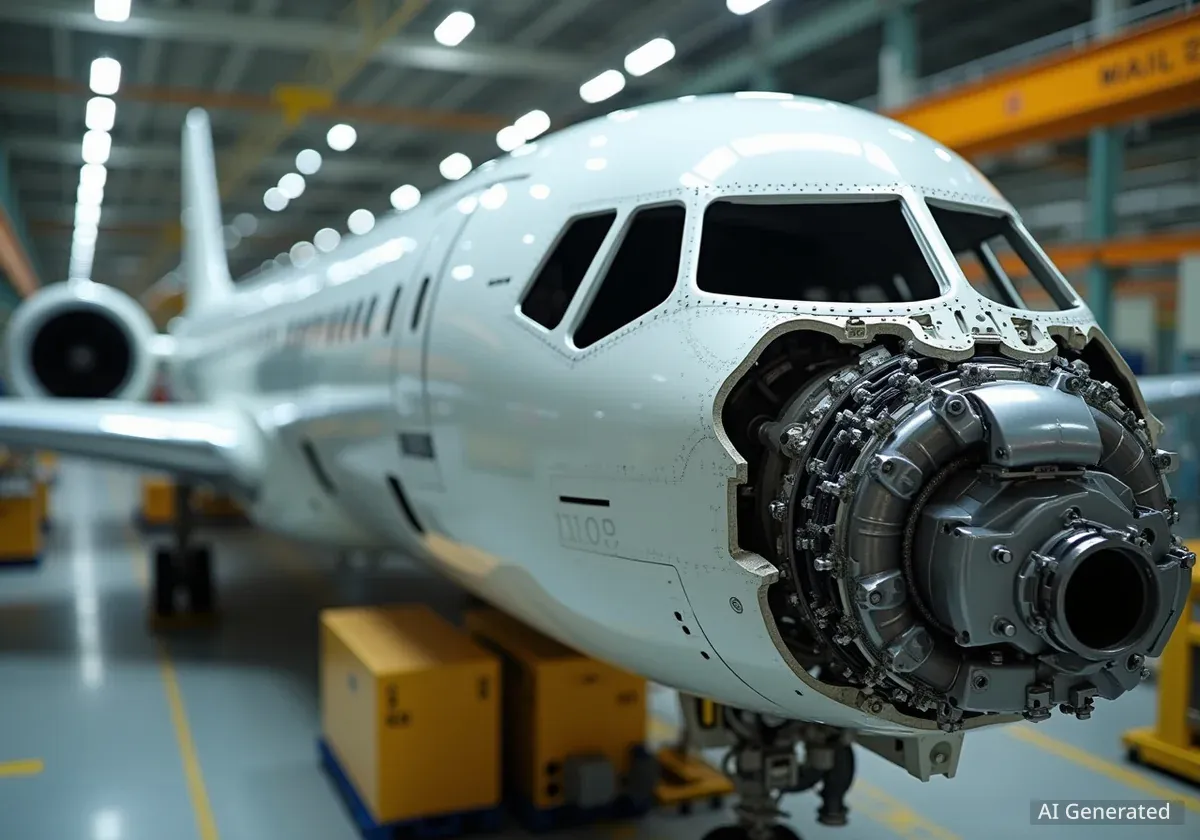Hartsfield-Jackson Atlanta International Airport experienced a ground stop on Friday afternoon following a fire alarm triggered by strong gas fumes. The Federal Aviation Administration (FAA) confirmed the incident, which led to the evacuation of the airport's air traffic control tower and significant flight delays at one of the world's busiest travel hubs.
Key Takeaways
- Hartsfield-Jackson Atlanta International Airport issued a ground stop on Friday.
- The incident was caused by a fire alarm and strong gas fumes.
- The airport's air traffic control tower was evacuated.
- Hundreds of flights were delayed due to the ground stop.
- A secondary control tower is being prepared to resume operations.
Ground Stop Impacts Air Traffic
The ground stop was put into effect around 5 p.m. Eastern Time. It forced all departing flights to remain on the ground and inbound flights to be held at their origin airports. This measure was a direct response to a safety concern within the air traffic control tower.
The FAA stated that the alarm was activated by a significant odor of gas. This required immediate action to ensure the safety of personnel and operations. First responders, including fire and emergency services, were quickly on the scene to assess the situation at the airport.
Fact: World's Busiest Airport
Hartsfield-Jackson Atlanta International Airport has consistently ranked as one of the world's busiest airports by passenger traffic and aircraft movements for many years. In 2023, it served over 104 million passengers, highlighting its critical role in global air travel.
Air Traffic Control Tower Evacuated
The primary air traffic control tower at the Atlanta airport was evacuated as a precaution. This action is standard procedure when potential hazards, such as strong gas fumes, are detected in critical operational areas. FOX 5 Atlanta reported on the evacuation and the presence of emergency crews.
During an evacuation, air traffic controllers move to alternative facilities to continue managing flights. The FAA confirmed that efforts were underway to set up a secondary air traffic control tower. Once this secondary tower is fully operational, the ground stop can be lifted, allowing flights to resume.
"The ground stop went into effect after an alarm was triggered by a 'strong' odor of gas fumes," the FAA confirmed in a statement regarding the incident.
Widespread Flight Delays Reported
The impact of the ground stop was immediate and widespread. Hundreds of flights originating from or destined for Hartsfield-Jackson Atlanta International Airport experienced delays. Flight tracking websites, such as FlightAware, showed a significant number of flights affected.
Travelers were advised to check their flight status with their respective airlines. Such incidents can cause a ripple effect across the national air travel network, leading to further delays at other airports as well. The disruption affects both passenger and cargo operations.
Passenger Experience During Delays
Passengers at the airport during the incident faced uncertainty. Many waited in terminals for updates on their flights. Airlines typically work to rebook passengers and provide information as quickly as possible during unforeseen disruptions like this.
Airport staff and airline ground crews play a crucial role in managing the situation. They help direct passengers and provide necessary assistance. Communication is key to keeping travelers informed and reducing confusion.
Broader Air Travel Context
This incident occurred at a time when airports across the United States have faced various operational challenges. Recent reports have highlighted delays due to factors like staffing issues and government shutdowns affecting air traffic control services. These issues can strain an already complex system.
The aviation industry continuously works to enhance safety procedures and emergency response protocols. Regular drills and updates to these plans are essential for handling unexpected events effectively and minimizing disruption to travelers.
Resumption of Operations Expected
Authorities focused on resolving the issue quickly and safely. The primary goal was to ensure that the source of the gas fumes was identified and neutralized. Once the air quality in the main tower was deemed safe or the secondary tower was fully operational, normal air traffic control services could restart.
The FAA and airport management coordinate closely during such events. Their combined efforts aim to restore full airport functionality as soon as possible. This includes managing the backlog of delayed flights and ensuring a smooth resumption of air travel.
- Emergency Response: First responders were on site quickly.
- Safety Protocols: Evacuation of the tower followed established safety guidelines.
- Operational Continuity: A secondary control tower was prepared to take over.
- Passenger Communication: Airlines were tasked with updating affected travelers.
This is a developing situation. TravModo will provide further updates as more information becomes available from airport officials and the FAA.





